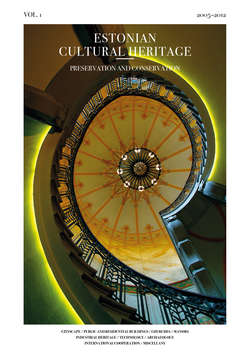Читать книгу Estonian Cultural Heritage. Preservation and Conservation. 2005-2012 - Tallinn Culture And Herit Arts - Страница 10
На сайте Литреса книга снята с продажи.
The outcomes of the programme
ОглавлениеThe work of the expert committee resulted in a comprehensive overview of the 20th-century architectural heritage. Although it was not foreseen in the project a conceptual and substantial programme to introduce its results was prepared: in summer 2013 an exhibition supported by a relevant catalogue was held at the Museum of Estonian Architecture and in June 2013 a conference for heritage and conservation experts was held at the Department of Cultural Heritage and Conservation of the Estonian Academy of Arts.
Another important result of the project is that the general public was widely informed about the 20th-century architectural heritage. Although there is a lack of methods to preserve architectural monuments and to update their technical conditions in the manner that makes them meet the modern requirements, it is clear that the first and the most effective method to protect any heritage is to increase the awareness of its owners, as well as the public in general. First improvements are already noticeable in the way local municipalities are drawing up comprehensive plans or in connection with CO2 programme managed by the State Real Estate Company. The general public is now much better informed about the value of the 20th-century architectural heritage. Unfortunately, this alone is not enough if there is no construction technology that offers optimal compromises between heritage protection and modern construction requirements. This project did not resolve all the problems related to the preservation of the best part of the 20th century architectural heritage, but a huge step forward in appreciating and protecting this kind of heritage has been made. Besides, a huge number of problems were identified which need to be dealt with urgently in order to insure responsible, sustainable and socially acceptable national heritage conservation.
Epp Lankots is a researcher at the Estonian Academy of Arts; Leele Välja is the director of the Museum of Estonian Architecture
1 This number is somewhat conditional as in the thematic study of railway stations one site means one railway station. However, the number of buildings in each station ensemble is different. [ ↵ ]
